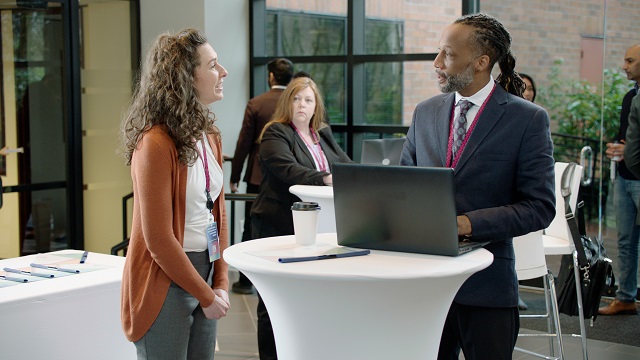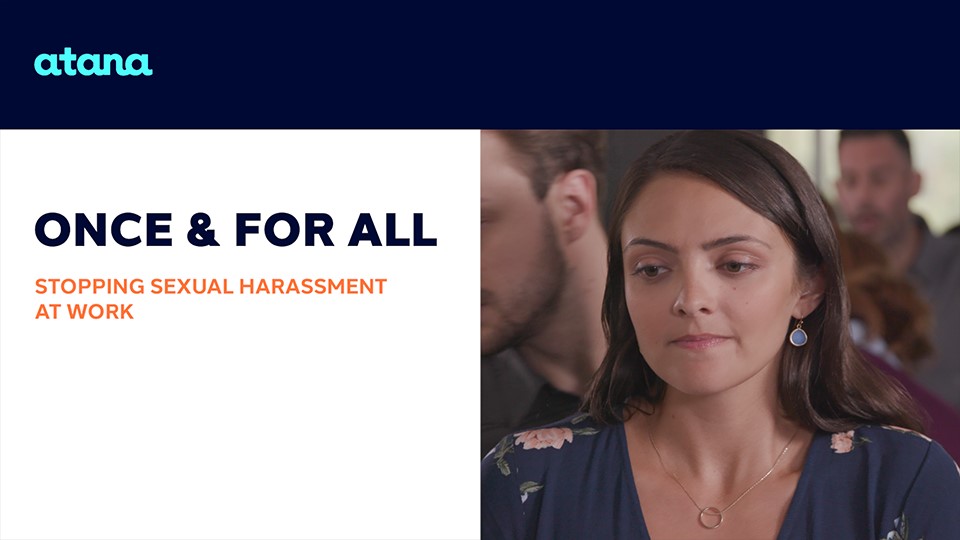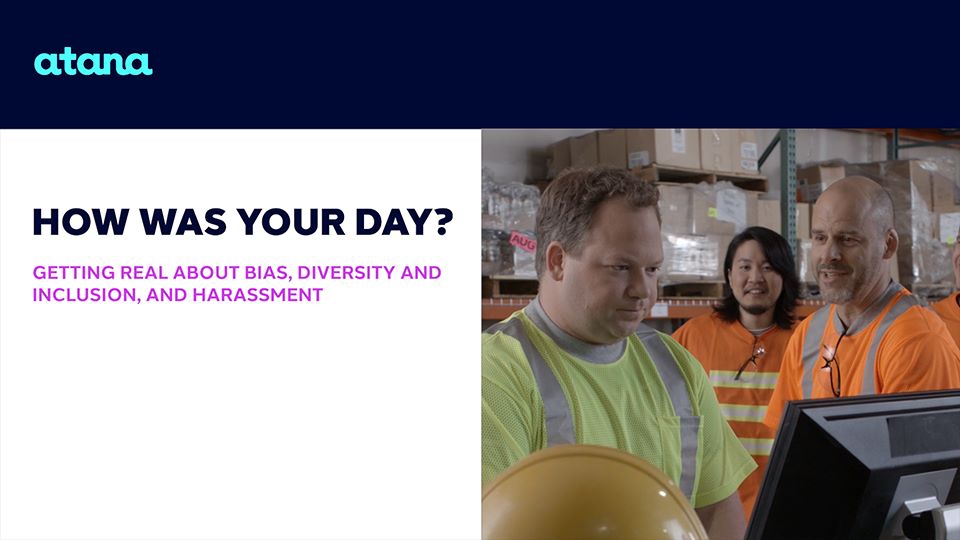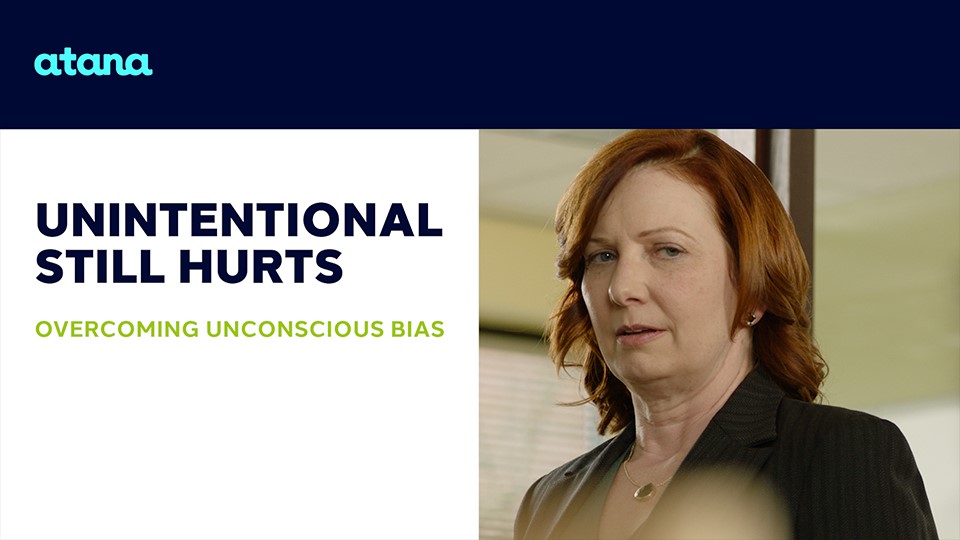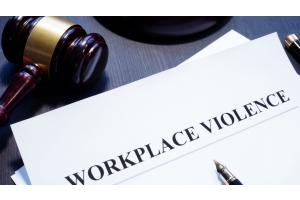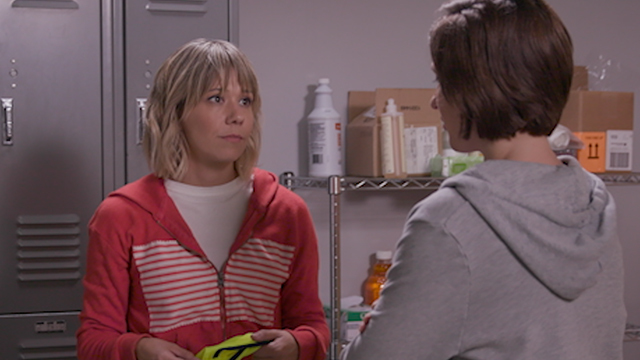
Why Bystanders Often Don't Speak Up
Our related post, The Bystander Effect: Overcoming Bystander Apathy explains why people who witness disrespectful or harassing behaviors at work hesitate to speak up, or choose to leave it to other bystanders to speak up rather than doing so themselves.
The Bystander Effect occurs when the presence of others discourages an individual from intervening in an emergency situation, against a bully, or during an assault or other crime. The greater the number of bystanders, the less likely it is for any one of them to provide help to a person in distress.1
At work, the Bystander Effect may come into play when an employee:
- witnesses inappropriate conduct or harassment but says nothing.
- overhears employees disrespecting a colleague but does not call them out.
- sees a coworker bully another employee and simply turns away.
- laughs when a sexual innuendo is directed toward a coworker, even when the target of the innuendo is clearly uncomfortable.
The Bystander Effect happens every day and can significantly undermine an organization’s ability to build and maintain a safe and respectful workplace. Employees who remain silent when they observe disrespectful, demeaning conduct, sexual harassment, or sexual misconduct allow the toxic behaviors to continue.
Bystander Intervention Training: Becoming an Upstander
What is an Upstander?
The dictionary definition of an upstander is: a person who speaks or acts in support of an individual or cause, particularly someone who intervenes on behalf of a person being attacked or bullied.
In other words, an upstander is someone who empathizes with their coworker and offers support when they see them in distress.
Upstanders make a significant positive impact by:
- Preventing inappropriate conduct from continuing or escalating.
- Stopping harassment or misconduct from occurring.
- Communicating to the perpetrator that their behavior is not tolerated in the workplace.
- Positively changing the life of the victim by providing support, validation, and encouragement.
- Enforcing the boundaries of what is acceptable and not acceptable in the workplace.
- Maintaining a safe and respectful work environment.
- Changing the abusive or disrespectful norms in the workplace.
How to be an Upstander
Speaking up when you witness disruptive, disrespectful or harassing behavior isn’t always easy.
But it can be done safely when you ACT:
Approach
• Create a distraction (e.g., entering the room and making noise) or redirect the conversation (e.g., asking about lunch plans)
• Approach the perpetrator (if the situation and relationship warrant it)— in the moment or privately after the incident.
The approach taken in the following video clip provides a great example:
Clip from Unintentional Still Hurts @2021-2023 Atana
Care
• Empathize with and support the targeted employee or victim.
• Encourage them to speak up—ask how they're doing, listen, and offer to go with them to talk with a manager or HR.
Watch the following video clip to see what the Care step looks like:
Clip from Once & For All ©2018-2023 Atana
Talk
• Discuss the situation with a manager or HR if the disrespectful or harassing behavior does not stop.
When to ACT?
Before intervening, here are a few questions you can ask yourself about the target or victim of disrespectful or harassing behavior.
- Does my colleague appear uncomfortable?
- Does my colleague appear to be asking for help?
- Does my colleague appear to be threatened?
Answering yes to these questions means there is an opportunity for you to ACT in the workplace.
Learn how your relationship with the offender can help determine the best way to ACT.
a) A coworker and friend
Assess the situation and notice what is happening around you. When you observe that your coworker has made someone uncomfortable, whether they mean it or not, be an upstander and speak up. Talk to your coworker and explain how the conduct could affect the person, as well as the possible consequences if the situation escalates.
b) A coworker that you don’t know well
Again, assess the situation and determine if intervention is necessary. If it is possible to redirect the conversation and put an end to the bad behavior, do so.
Empathize with the victim by asking if they are okay. If need be, encourage them to take the matter to HR.
c) A superior (direct supervisor or manager)
When harassment or inappropriate conduct comes from a supervisor, it is important to report it. Go to another manager or Human Resources.
Recommended Bystander Intervention Training
Interrupting disrespectful conduct or harassment when you see it happening, talking with the perpetrator afterward, and encouraging the victim to speak up are all ways upstanders ACT. The following Atana courses provide helpful instruction in this area.
Atana Insights, our proprietary analytics engine, amplifies the impact of this award-winning content by turning course engagement into data, data into insights, and insights into actionable next steps that improve key performance indicators directly tied to culture change and training ROI. The more courses an employee engages with, the stronger the data, the more impactful the insights—and the better the outcomes. Request a demo of our Atana Insights dashboard.

